Our changing flora
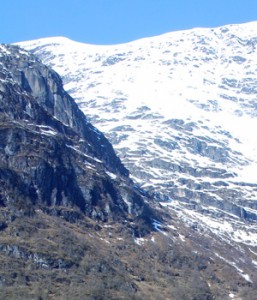
Our changing flora
All of our present plants have arrived in the U.K. since the end of the last Ice Age, about ten to twelve thousand years ago. Plants and animals moved north as the sheets of ice gradually retreated; they were able to do this as ‘we’ were still joined directly to parts of Europe -by a great plain with meandering rivers, so that present-day East Anglia was linked to parts of The Netherlands and North Germany. The area now occupied by the North Sea was a region which some refer to as Doggerland, and it offered a route to Britain for plants and animals and the first human colonists (who were to change the landscape quite dramatically).
However, the sea level rose; Doggerland was covered with water and the English Channel formed – Britain was an island. Species that arrived after the ice age and before our separation from Europe are generally regarded as our native species. Many other species have arrived since then but they have been introduced either deliberately or accidentally. Non-native species that were introduced into the U.K. between the end of the ice age 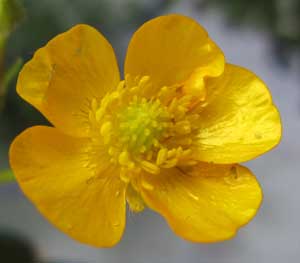 but before 1500 A D are called archaeophytes (meaning ancient plants); plants brought by the Romans or Normans would fall into this category. These represent some of most ‘treasured’ or rarest plants. Plants that have been introduced since 1500 A D are termed neophytes or ‘new plants’; these would include species brought from the Americas and Far East.
but before 1500 A D are called archaeophytes (meaning ancient plants); plants brought by the Romans or Normans would fall into this category. These represent some of most ‘treasured’ or rarest plants. Plants that have been introduced since 1500 A D are termed neophytes or ‘new plants’; these would include species brought from the Americas and Far East.
Many non-native species fall into the ’new plant’ or neophyte category. Many are garden escapes and are quite localised; these do not represent a threat to our native species. However, every now and then, there comes along a species that proves to be problematical. Perhaps, it becomes abundant or dominant in a particular area or habitat. It may be that an area is not being properly managed or perhaps is polluted, for example, with excess nitrate and / or phosphate and this has allowed the plant to take hold. Some species can grow rapidly either by
- spreading vegetatively (without seeds, by rhizomes, runners etc) or
- through producing prolific quantities of seeds.
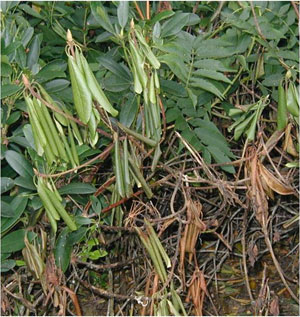 Rhododendron ponticum can make use of both ‘strategies’. It can reproduce by seed or vegetatively. A mature plant can produce hundreds of flowers; and each flower head can form between 3000 and 7000 seeds. A single plant may release millions of seeds. These seeds germinate well in areas where the ground has been disturbed or is covered with moss. The young seedlings establish associations with soil fungi – which enables them to do well in nutrient-poor soils. The plant also spreads asexually as when its branches or shoots come in contact with soil, they form roots. This feature and its sideways growth habit means that it can spread even into unfavourable areas. It may form large stands of vegetation, which create dense shade. Some species in the ground layer of plants underneath R. ponticum are simply shaded out of existence; furthermore, many trees species cannot regenerate under such a canopy.
Rhododendron ponticum can make use of both ‘strategies’. It can reproduce by seed or vegetatively. A mature plant can produce hundreds of flowers; and each flower head can form between 3000 and 7000 seeds. A single plant may release millions of seeds. These seeds germinate well in areas where the ground has been disturbed or is covered with moss. The young seedlings establish associations with soil fungi – which enables them to do well in nutrient-poor soils. The plant also spreads asexually as when its branches or shoots come in contact with soil, they form roots. This feature and its sideways growth habit means that it can spread even into unfavourable areas. It may form large stands of vegetation, which create dense shade. Some species in the ground layer of plants underneath R. ponticum are simply shaded out of existence; furthermore, many trees species cannot regenerate under such a canopy.
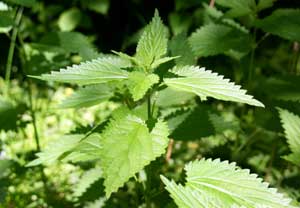 Other neophyte species that have caught the headlines include Japanese knotweed, Giant Hogweed, Himalayan Balsam and New Zealand Pigmyweed. However, it is not just these ‘new species’ that are ‘ botanical thugs’. Some of our native plants, which are found right across the UK, can grow at the expense of other archaeophytes or native species.
Other neophyte species that have caught the headlines include Japanese knotweed, Giant Hogweed, Himalayan Balsam and New Zealand Pigmyweed. However, it is not just these ‘new species’ that are ‘ botanical thugs’. Some of our native plants, which are found right across the UK, can grow at the expense of other archaeophytes or native species.
The Countryside Survey has monitored our plants and animals since 1978, and records changes in our countryside. In the most recent report (fieldwork conducted in the Summer, 2007), it was noted that plants like bramble, nettle, ivy and hawthorn were becoming increasingly common, together with a number of grasses. A summary of the latest Countryside Survey was published in The Times and The Mail; the latter offering an interesting table of the ‘winners and losers’ in the struggle for existence in the seemingly peaceful countryside!
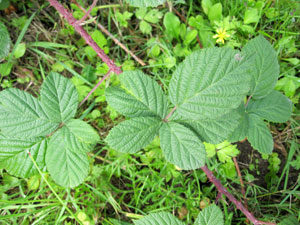 Whilst the increase in nettles and brambles offers some benefits; for example, brambles provide fruits for dormice, nettles provide food for red admiral and peacock butterflies and both offer cover for hedgehogs – their unchecked growth and spread results in problems for smaller, low growing species such as harebells and wild strawberries. Where woodland is not managed (e.g. through coppicing, felling etc) then it tends to become shadier (through closure of the canopy, growth of ivy etc) consequently only shade-tolerant species will survive beneath, and many ‘typical’ woodland species struggle to survive.
Whilst the increase in nettles and brambles offers some benefits; for example, brambles provide fruits for dormice, nettles provide food for red admiral and peacock butterflies and both offer cover for hedgehogs – their unchecked growth and spread results in problems for smaller, low growing species such as harebells and wild strawberries. Where woodland is not managed (e.g. through coppicing, felling etc) then it tends to become shadier (through closure of the canopy, growth of ivy etc) consequently only shade-tolerant species will survive beneath, and many ‘typical’ woodland species struggle to survive.
Comments are closed for this post.
Discussion
Correct, but as the glaciers were pretty much pan-arctic and across Europe ………
The above jpg is one of mine from Norway.
A lot of the jpgs (in the various blogs) are mine or from others involved with woodlands.co.uk.
I bet that snow photo at the top is not from the UK!
However, a very interesting article. Seems like flora change and evolve just like fauna.
Hogweed might make for an interesting blog …….
You are right to say some species become invasive. I lived in Devon and my beautiful garden was under constant attack from Hogweed.
Well, some species can become invasive in some areas like R. ponticum and reduce the biodiversity of the area. Some species are very difficult to eradicate such as the Japanese knotweed, and some like giant hogweed have to be treated with some caution. If you google or do a search on the various names above, you will find links with much more detail.
regards
Chris
A very interesting article.
I’m curious…..what’s the most “damage” can these problematic species give to their “invaded” land? Would there be serious long term health risks that we should be wary of, if any? Or should we not be concerned at all?

[…] tracks of the Northern Hemisphere, came to an end some nine to ten thousand years ago – when the temperature (and sea level) rose. It has always been assumed that no trees survived in the regions covered by the thick ice sheet, […]
Spruce – an ice age survivor ? | Woodlands.co.uk
30 March, 2012